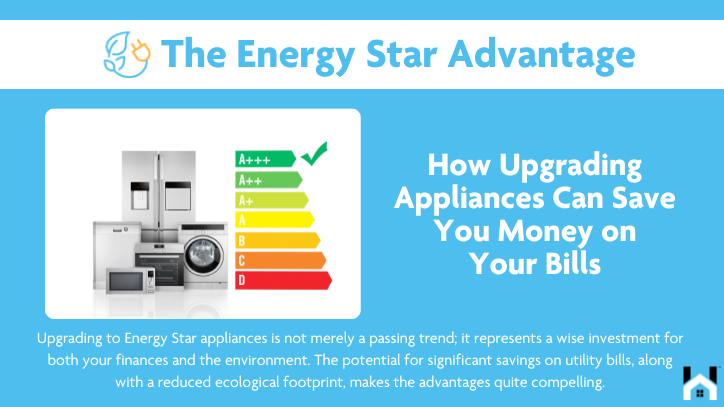
Upgrading to Energy Star appliances is not merely a passing trend; it represents a wise investment for both your finances and the environment.
The potential for significant savings on utility bills, along with a reduced ecological footprint, makes the advantages quite compelling. This guide aims to shed light on the benefits of selecting Energy Star-rated products, help you grasp the concept of energy efficiency ratings, and offer practical advice for making the transition.
Explore how these appliances can contribute to long-term savings and support a more sustainable lifestyle.
What is Energy Star?
Energy Star is a program established by the U.S. Environmental Protection Agency (EPA) designed to assist consumers in identifying energy-efficient products and practices. The primary goal is to reduce energy consumption across various sectors.
When a product carries the Energy Star label, it signifies that it meets stringent energy efficiency standards, making it an eco-friendly choice for those looking to reduce their carbon footprint and promote sustainable living. By opting for Energy Star certified appliances, homeowners can make significant strides toward energy-efficient upgrades in their homes while enjoying cost savings and lower utility bills.
Since its inception in 1992, the Energy Star program has developed into a vital framework for reducing greenhouse gas emissions and promoting responsible energy management. The mission of Energy Star is not only to enable consumers with valuable information but also to encourage manufacturers to innovate and produce high-performance equipment.
Consequently, millions of households benefit financially from reduced energy usage, with many products also designed to enhance comfort and performance. This collective effort leads to a healthier environment, as decreased energy consumption results in lower harmful emissions. Choosing Energy Star products ultimately serves as a win-win solution for both personal budgets and the planet.
Benefits of Upgrading to Energy Star Appliances
Upgrading to Energy Star appliances provides a range of benefits that go beyond merely reducing energy consumption. These environmentally friendly options can lead to substantial savings on utility bills while improving the overall comfort and efficiency of your home.
Energy Star certified appliances, including refrigerators, washing machines, and HVAC systems, are engineered to perform exceptionally well while using less energy. This means lower household expenses and a smaller carbon footprint.
Embracing these energy-efficient upgrades is not only a wise financial choice but also a meaningful step toward sustainable living and environmentally conscious practices.
Cost Savings on Utility Bills

One of the most compelling reasons to invest in Energy Star appliances is the significant cost savings they offer, which can lead to notably lower utility bills over time. These appliances are designed to use less electricity and water, resulting not only in immediate reductions in energy costs but also in long-term financial benefits for homeowners. By adopting energy-saving strategies and utilizing these efficient devices, households can effectively manage their energy consumption while enjoying reduced expenses.
For example, a typical Energy Star-rated refrigerator consumes about 15% less energy compared to non-rated models, leading to an average annual savings of $100 on electricity bills. Similarly, an Energy Star dishwasher can save a household approximately 3,870 gallons of water each year, which also translates into lower water bills.
When homeowners assess the return on investment (ROI), many can expect their Energy Star upgrades to pay for themselves within just a few years due to these substantial savings. Plus upgrading appliances, incorporating smart thermostats and optimizing insulation can further enhance energy efficiency, ensuring that families not only save money but also contribute to a more sustainable planet.
Environmental Impact
The environmental impact of upgrading to Energy Star appliances is significant, as these products play a crucial role in reducing a household's carbon footprint through energy conservation and sustainable living practices. By opting for energy-efficient technology, homeowners can actively contribute to the fight against climate change and promote a cleaner, healthier environment. Energy Star products are designed to consume less energy, resulting in lower greenhouse gas emissions and reduced pressure on our energy resources. This highlights the importance of making eco-friendly choices in our everyday lives.
These appliances frequently incorporate innovative designs that enhance water conservation, further supporting sustainable practices in both urban and rural contexts. Their efficiency not only leads to reduced utility bills, encouraging mindful consumption, but also fosters a more sustainable future by diminishing the demand for energy production.
As more individuals choose Energy Star-rated options, the collective impact becomes more pronounced, leading to significant reductions in overall pollution and substantial improvements in the preservation of natural resources. This ripple effect demonstrates how individual choices can drive broader changes in our society's environmental footprint.
How to Choose the Right Energy Star Appliances

Selecting the appropriate Energy Star appliances for your home can significantly enhance energy efficiency, especially when you take into account the energy efficiency ratings and the diverse features that modern appliances provide.
When choosing new appliances, it is important to compare performance ratings, recognize the advantages of smart appliances, and assess how each product fits with your household energy usage and budget.
By making informed decisions, you can achieve improved performance, lower energy consumption, and long-term savings, which further supports your commitment to sustainable living.
Understanding Energy Efficiency Ratings
Understanding energy efficiency ratings is essential when shopping for Energy Star appliances, as these ratings offer valuable insights into the performance and energy consumption of the appliances. Energy labels, particularly those associated with Energy Star products, indicate the relative efficiency of various appliances, guiding consumers in identifying the best options for their homes. By becoming familiar with these ratings and their impact on appliance efficiency, individuals can more effectively evaluate which products will provide optimal energy savings and performance.
The importance of energy efficiency ratings extends beyond mere numbers; they play a critical role in reducing energy costs and prolonging the lifespan of appliances. These ratings can vary from straightforward letter grades, such as A to G, to more specific numerical values, providing clarity regarding performance. For example, an appliance rated A typically consumes less energy compared to one rated C, leading to lower utility bills.
Consumers should also consider additional indicators, such as the estimated annual energy use displayed on the product, to assess long-term savings. Embracing energy-efficient appliances not only benefits personal finances but also positively impacts the environment, often enticing buyers with incentives like rebates or tax credits.
Factors to Consider When Upgrading

When considering an upgrade to Energy Star appliances, several important factors come into play that can significantly influence your decision-making process. These include the efficiency of the appliances, your budget, and the potential for smart energy use. It is essential to evaluate each appliance's energy consumption, maintenance costs, and the specific needs of your household in order to identify the most suitable options for your home. By thoughtfully considering these factors, you can ensure that your investment in energy-efficient upgrades results in both energy savings and enhanced performance.
Analyzing your household energy use patterns is crucial. This involves observing when and how frequently you use various appliances, as peak usage times can directly affect your overall energy costs. Budget constraints may also limit your choices, so it is wise to plan not only for the initial purchase but also for the long-term savings on your utility bills.
Keep in mind that while the upfront cost of Energy Star appliances may be higher, the ongoing savings, along with the potential increase in your home's value, can yield impressive returns on your investment. Additionally, prioritizing maintenance is important; regular checks can extend the lifespan and efficiency of these appliances, ensuring that your home remains a model of energy conservation.
Tips for Making the Switch to Energy Star
Transitioning to Energy Star appliances can be a seamless and rewarding journey, particularly when you adhere to practical tips aimed at maximizing energy efficiency and savings.
It is important to start by evaluating your current appliances and conducting an energy audit. Additionally, exploring available rebates and incentives can significantly enhance your understanding of the benefits of energy-efficient solutions, which is crucial for a successful transition.
By embracing smart appliances and energy-saving devices, you will not only lower your energy consumption but also manage your household energy use more effectively.
Maximizing Savings and Efficiency
To truly maximize savings and efficiency when transitioning to Energy Star appliances, homeowners should adopt a combination of energy-saving strategies that complement their new eco-friendly choices. By proactively managing energy usage—such as using smart thermostats, energy-efficient lighting, and water conservation techniques—households can further enhance their energy efficiency and enjoy reduced utility bills. These practices not only contribute to overall savings but also foster a sustainable lifestyle that benefits the environment.
Furthermore, integrating solar energy solutions can significantly decrease reliance on nonrenewable power sources. Homeowners may also find it beneficial to schedule laundry and dishwashing during off-peak hours to take advantage of lower energy rates. Implementing programmable timers for outdoor lighting ensures that energy is not wasted when it is not needed. Additionally, regular maintenance of appliances will improve their performance, helping them operate at peak energy efficiency.
By adopting a multifaceted approach that encompasses these practices, homeowners can achieve substantial long-term savings while reducing their carbon footprint.
Long-Term Savings with Energy Star
Investing in Energy Star appliances can provide substantial long-term savings. These energy-efficient technologies are specifically designed to reduce energy consumption throughout their lifespan while maintaining high performance.
By opting for Energy Star products, homeowners not only enjoy immediate cost savings on their utility bills but also play a role in fostering a more sustainable future. The return on investment from these appliances often comes from lower maintenance costs, increased efficiency, and enhanced comfort within the home.
This makes choosing Energy Star appliances a wise decision for anyone looking to improve their living spaces economically.
Calculating and Tracking Cost Savings
Calculating and tracking cost savings from Energy Star appliances is a crucial step for homeowners aiming to understand the financial impact of their energy-efficient upgrades. By monitoring energy consumption and expenses, individuals can more effectively evaluate the return on their investments and make necessary adjustments to their energy management strategies.
Utilizing energy-saving devices and keeping a detailed record of changes in utility bills can significantly aid in assessing the overall savings achieved through these economical choices.
To streamline this process, homeowners can take advantage of various apps designed for budgeting and energy tracking, such as EnergyHub or Mint. These applications offer user-friendly interfaces that facilitate the input of expenses and the analysis of spending trends.
Additionally, creating a simple worksheet that summarizes monthly utility bills alongside the energy savings from the new appliances can provide a clear visual representation of progress. For example, if an Energy Star refrigerator leads to a reduction in utility costs by $120 annually, consistently tracking this over time can result in substantial cumulative savings.
Regular assessments not only reaffirm the value of energy-efficient installations but also encourage timely adjustments in energy usage habits to maximize those savings.




